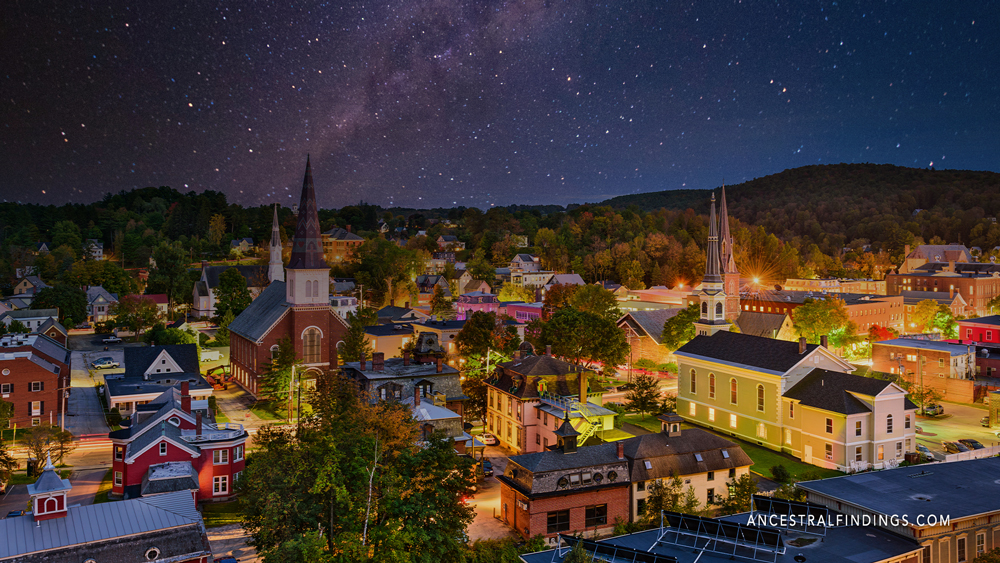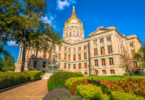Montpelier is the capital of the state of Vermont. It is also the county seat of Washington County and the site of the state government in Vermont. At about seven and a half thousand people, it is the least populous state capital in the United States. There are a lot of jobs within the Montpelier city limits, though, which brings the daytime commuter population to about twenty-one thousand people. Important buildings in the city include the Vermont College of Fine Arts and the New England Culinary Institute.
The city was named after the city of Montpelier in southern France. European settlers first began arriving in the area to do fur trapping and trading with the Native Americans in about 1600. The Natives with whom they were trading were largely wiped out of the area soon after, because of the disease the Europeans brought, and the wars for favorable trading positions between the local tribes their presence caused. There were small settlements of Native Americans in the Montpelier area up into the mid-1800s, but they largely disappeared after that.
The city was chartered in 1781, and granted the powers of a municipality to be governed by “the governor, council, and General Assembly of the Freemen of the State of Vermont.” The first official settlement there that was intended to be a permanent one by Europeans was in 1787. This was when two men, Colonel Jacob Davis and General Parley Davis, came to the Montpelier area from Charlton, Massachusetts. The men surveyed the land and the forest around it and even cleared some of the nearby forest while they were there. They build a large log house on the west of the Winooski River. Colonel Davis moved his family into that house later the next winter. They became the first people of European descent to live permanently in the Montpelier area. The previous European visitors had only stayed for the trapping season and then left until the next season. They did this for more than a century before Colonel Davis moved there.
It was Colonel Davis who chose the name Montpelier for the city. At the time he named it, there was an enthusiasm for anything that was French in America, because of all the important assistance the French had given to the American colonists during the Revolutionary War. Colonel Davis’s settlement attracted some positive attention from New England residents who wanted more freedom and land, as the colonies were quickly becoming crowded. By 1791, Montpelier had 117 residents living there.

By 1805, Montpelier had 1,200 people living there. That was the same year the state legislature, which had been moving from town to town for its meetings, was looking for a permanent state capital. They chose Montpelier because it had an excellent central location in the state, which made it easily accessible from most other points in the state’s boundaries, and also because the people who lived in Montpelier had plenty of land and money that they were willing to contribute to the building of a statehouse if their town was given the honor of being the state capital. So, Montpelier was selected as the capital, and a small capitol building was build on State Street.
The Marquis de Lafayette, who had rendered considerable aid to the Americans during the Revolutionary War at great expense and danger to himself, visited the United States in 1825, which was fifty years after the Revolution. Americans had loved Lafayette since the Revolution, and though he had returned to France decades prior, he was considered a national hero in the United States. On this triumphant visit to the country he helped found, Lafayette visited the town of Montpelier, to great excitement and acclaim amongst the townspeople.
There was another triumphal visit of a war hero to Montpelier shortly after the Civil War when Union Major General Phillip Sheridan came to town. Ten thousand residents of Montpelier came out to see Sheridan during this visit, where he addressed the fourth annual meeting of the former Union officers from Vermont. Sheridan gave particular attention and thanks to the Union veterans of Vermont who were present and assisted at the Battle of Cedar Creek.
Montpelier modernized early on in the industrial age. Its first municipal water driven hydro system was installed in 1884. The pressure the water generated was enough to provide electricity to power streetlights.
The city received its first charter in 1894. This charter was amended a few times, in 1898, in 1900, and in 1912. The first amendment was to allow Montpelier to annex part of the town of Berlin, which bordered it. The other amendments were to deal with things like waterworks, the makeup of the city council, and how the relationship between the city and the Washington County Grammar School (which was constructed in Montpelier) would be.
A local Montpelier man named George Dewey became a hero in the Spanish-American War. When Vermont declared October 12, 1899, to be Dewey Day to honor him, there were thousands of people from every part of Vermont who came to Montpelier to enjoy the celebration. That same year, John Erastus Hubbard donated some land to the city with the intent that this land, which was called Hubbard Hill, would be used to preserve the wilderness for future generations. The city built Hubbard Park on this land the year it was donated. John Hubbard donated more land to the city in 1911, on which an observation tower was constructed between 1915 and 1930.
The city suffered a serious flood in November of 1927. The rain lasted for two days, and at one point, more than six inches of rain fell in just a six hour period, which overflowed riverbanks and brooks. When the floodwaters finally receded, more than a foot of mud was left on the floors of downtown buildings.
Montpelier and its residents have always had the wonderful independent nature of the state of Vermont. It is a state capital that shines as an example of the American spirit to all the other states.






